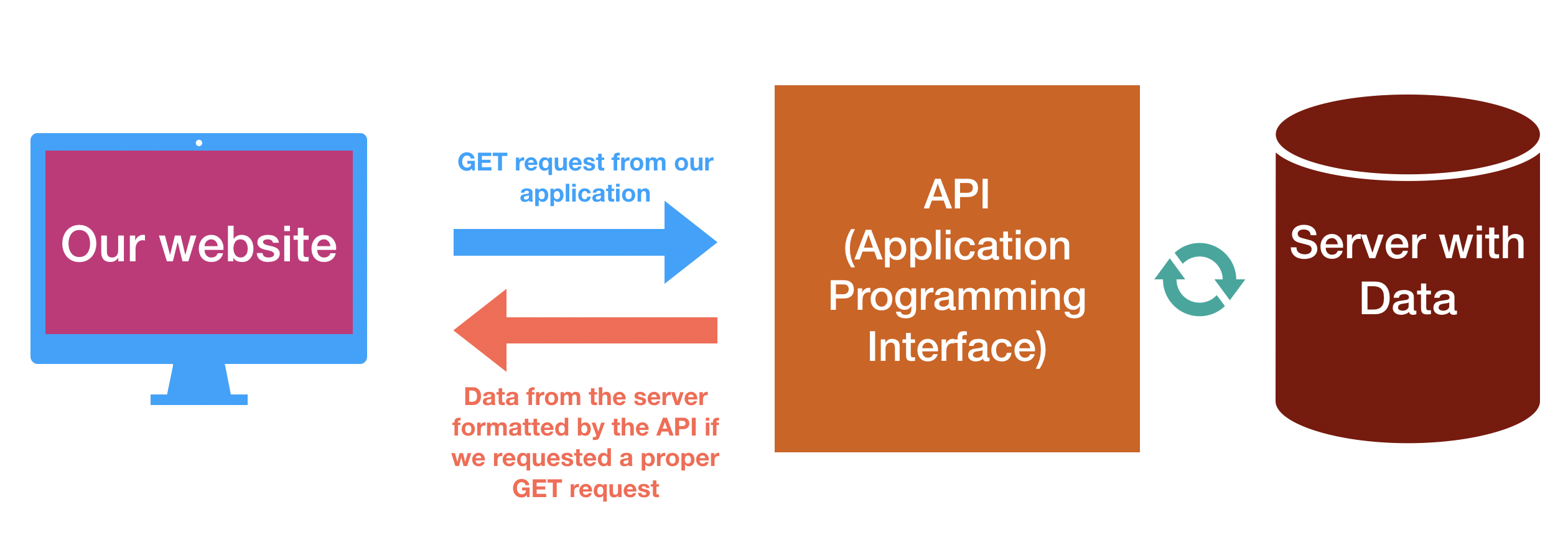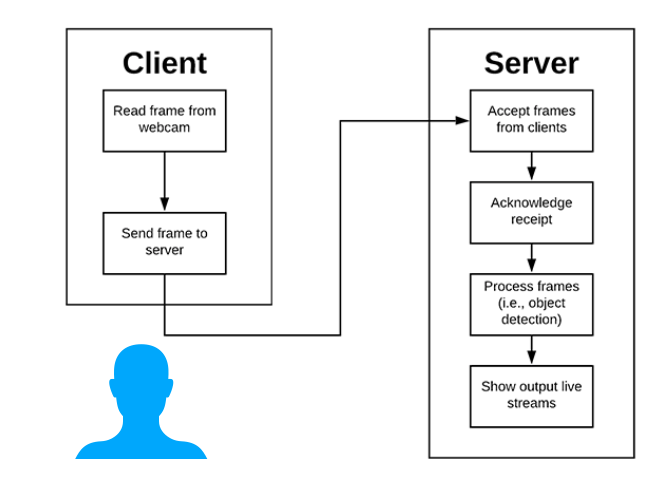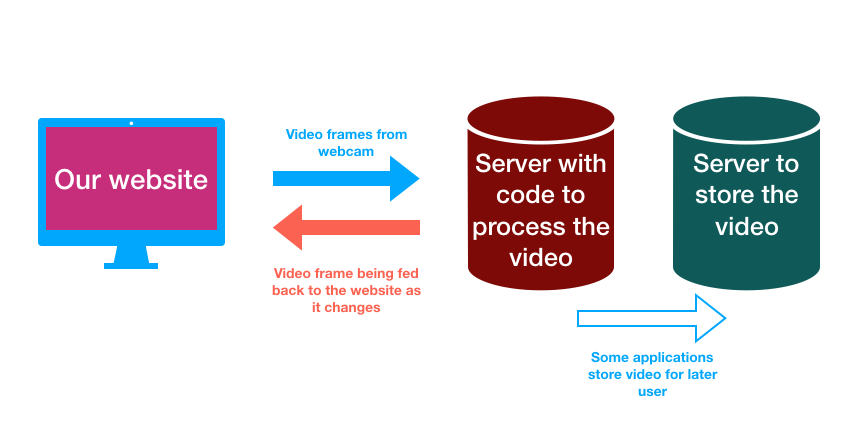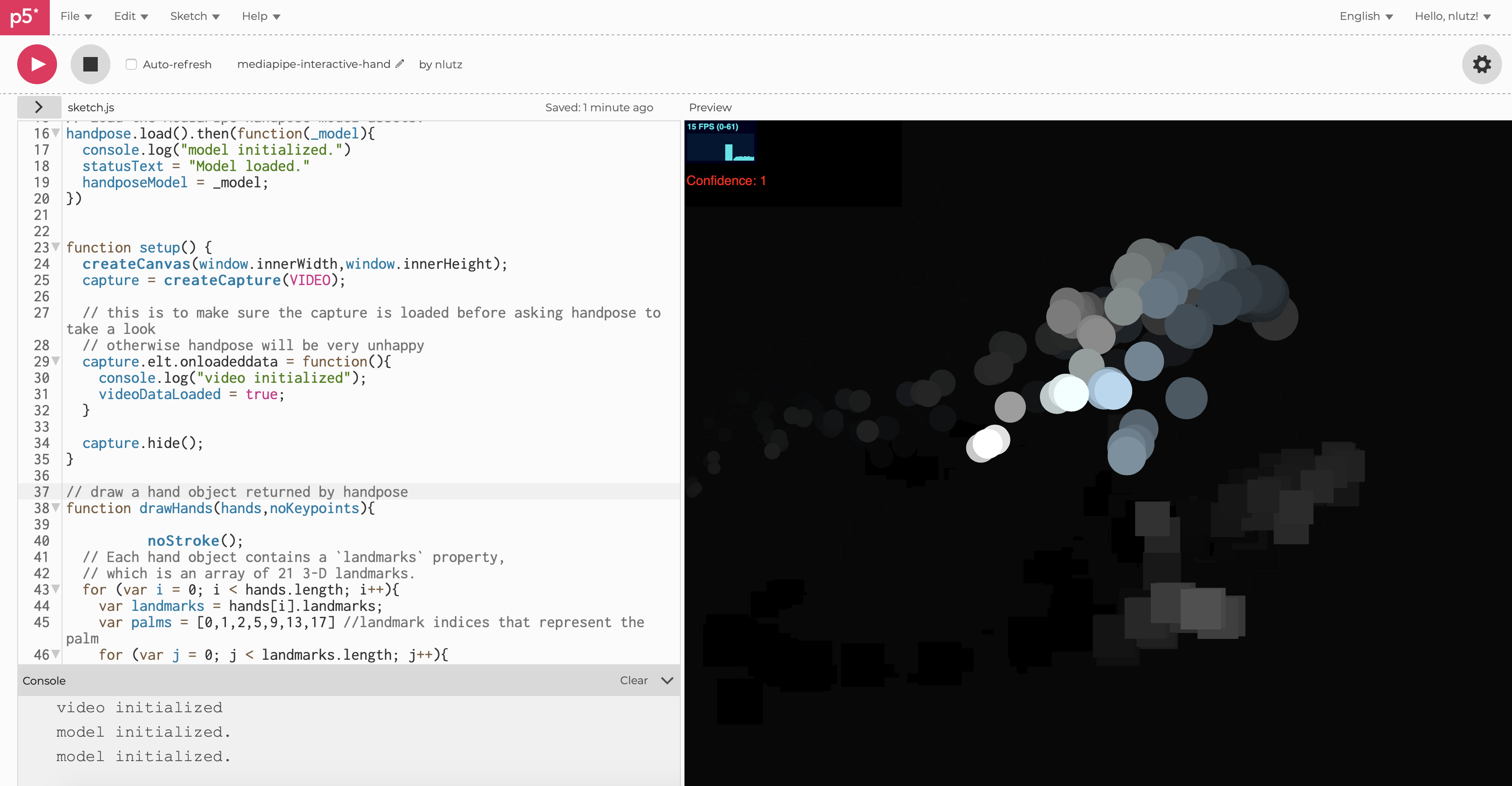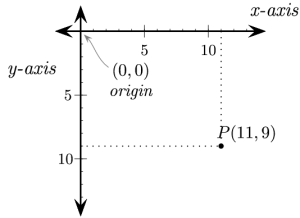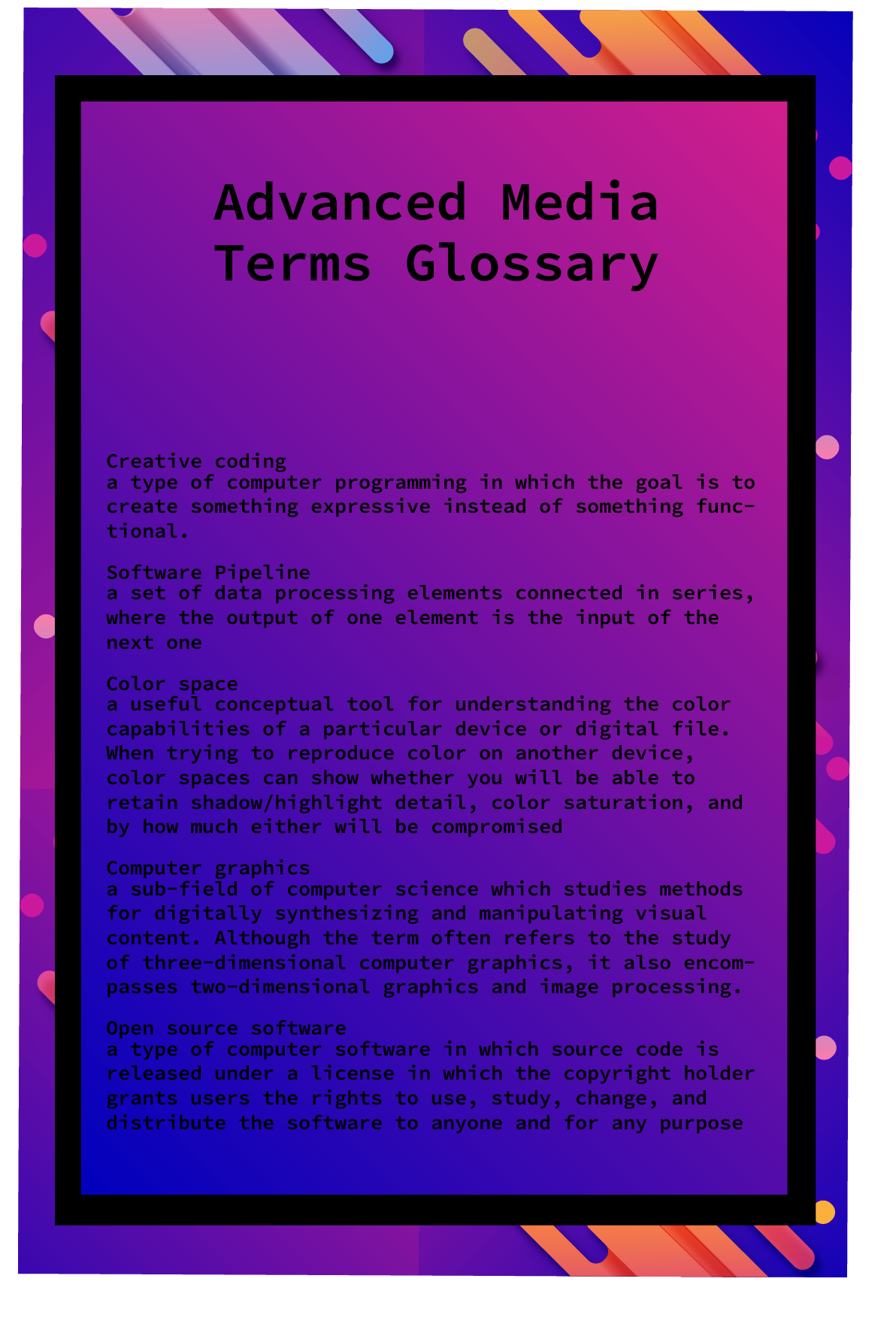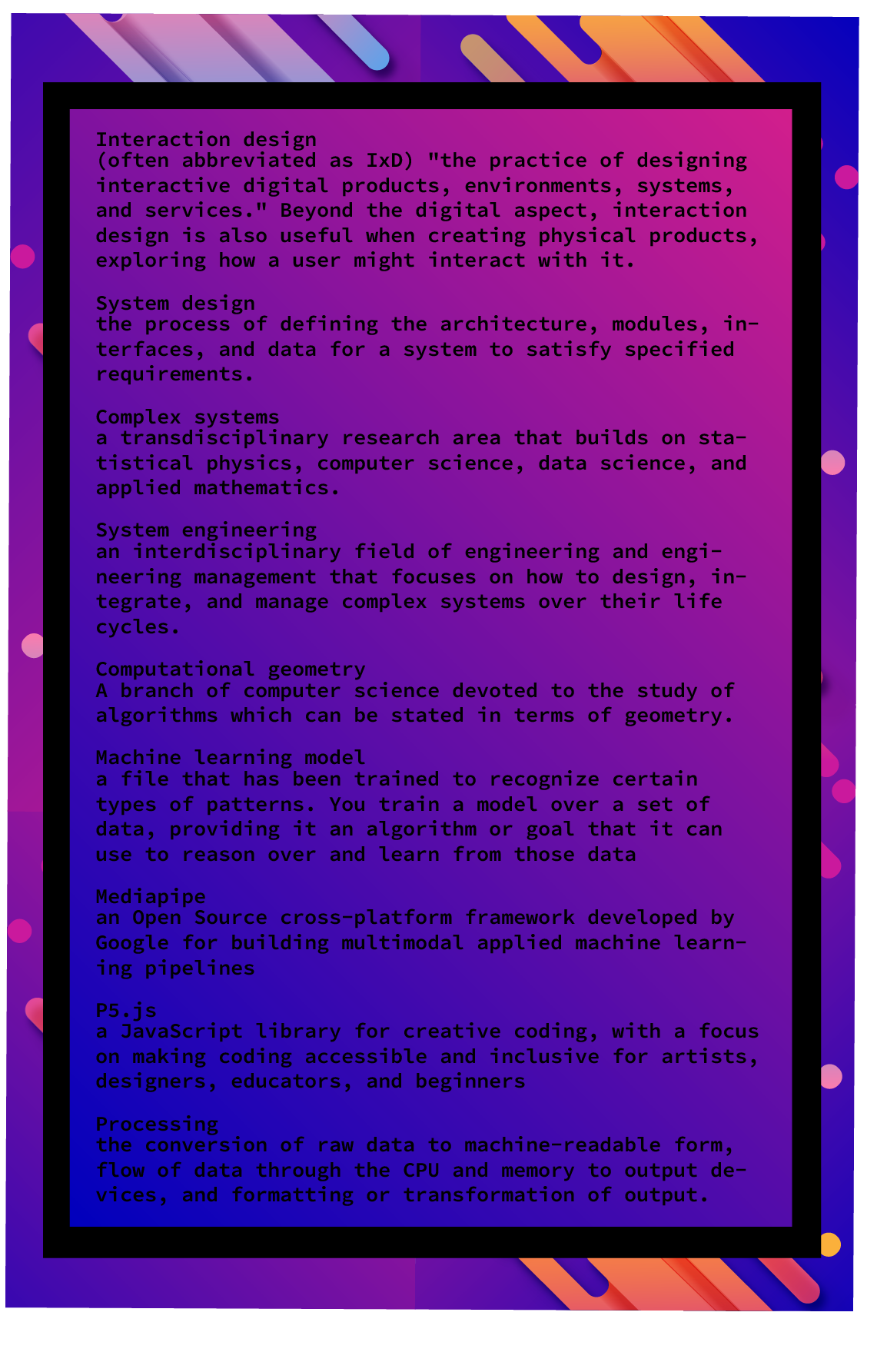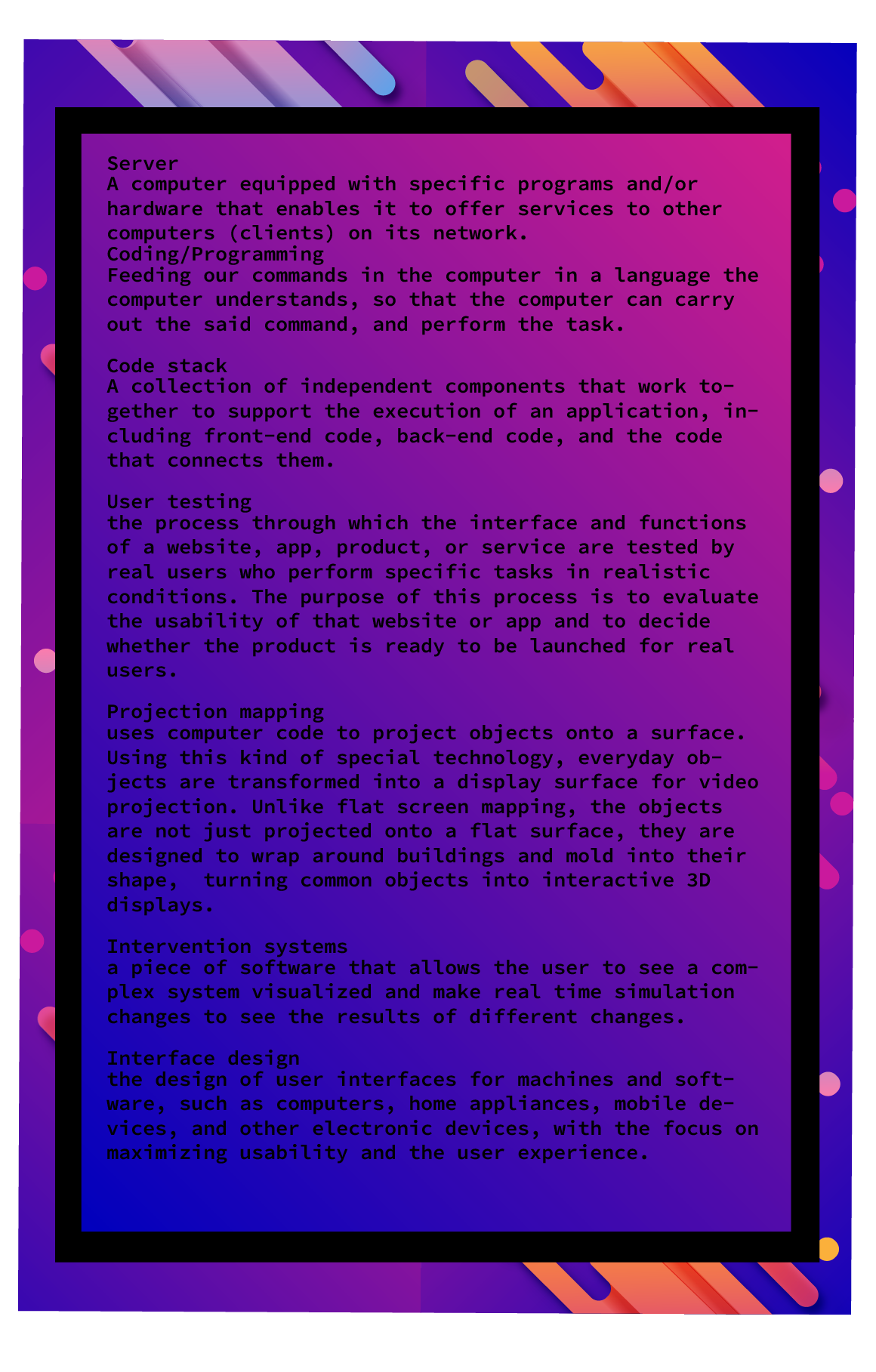Info
I've been doing creative and/or visual coding + math stuffs since 2015 when I started working with Ira Winder in City Science at the MIT Media Lab. I have primarily done Processing and p5.js.
I post (almost) daily sketches made wtih p5.js on my Twitter.
This is some documentation for 2 sessions at Gallaudet that I am teaching as part of Prof Max Kazemzadeh's Web Design course.
You can view the Github here and you can email me at nlutz@mit.edu if you have more questions! There are instructions to download all of the code here too.
Closed caption videos, glossaries, slides and more are available here
We will be hosting office hours on 3/24 and 3/31 for these sessions or for any Gallaudet students that want to come by and ask questions about resaerch in HCI, creative coding, or careers in this space. Info is below! ASL interpretation will be provided!
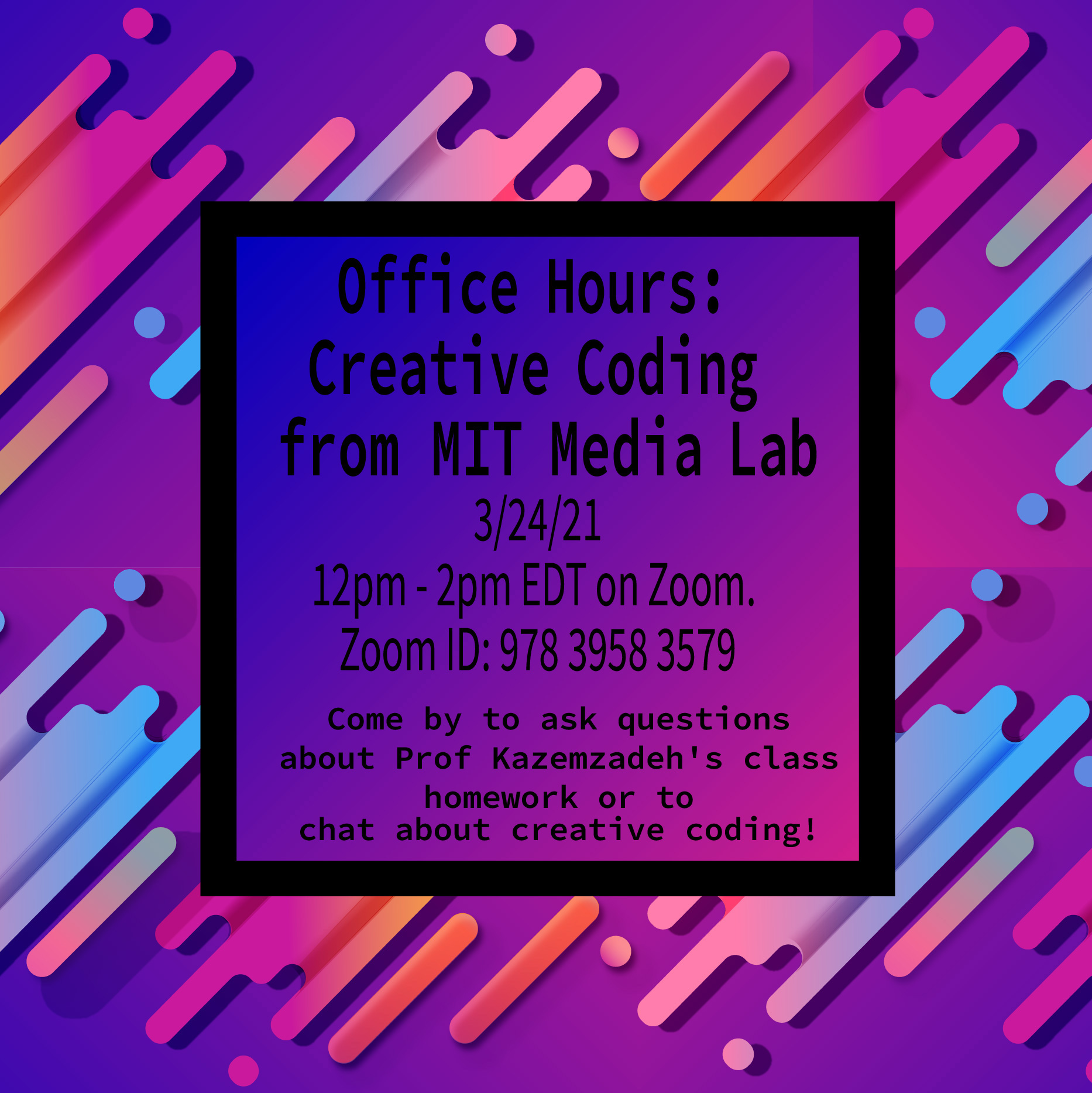
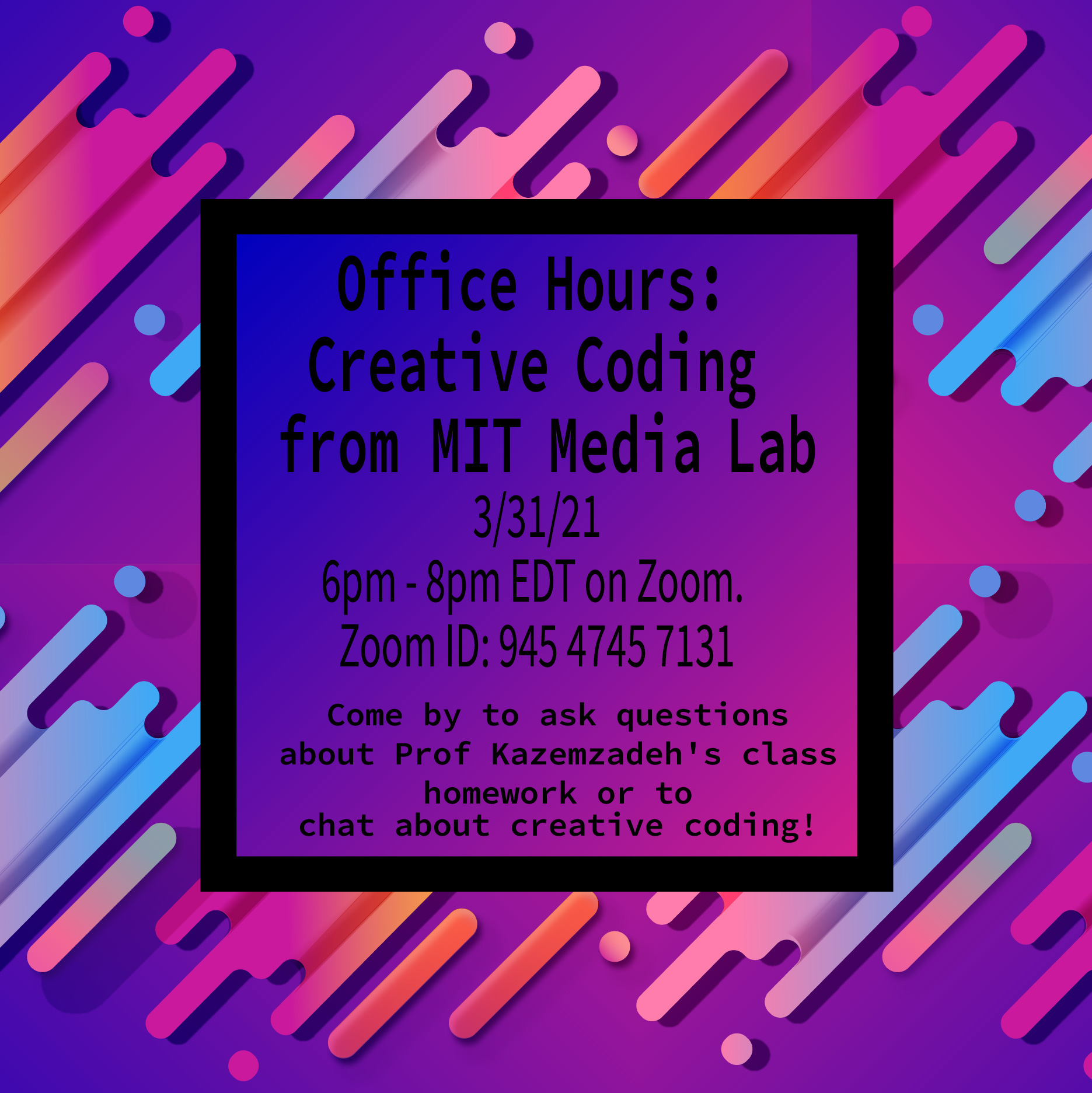
3/24 12pm-2pm Zoom ID: 978 3958 3579
3/31 6pm-8pm Zoom ID: 945 4745 7131

